Labs & Facilities
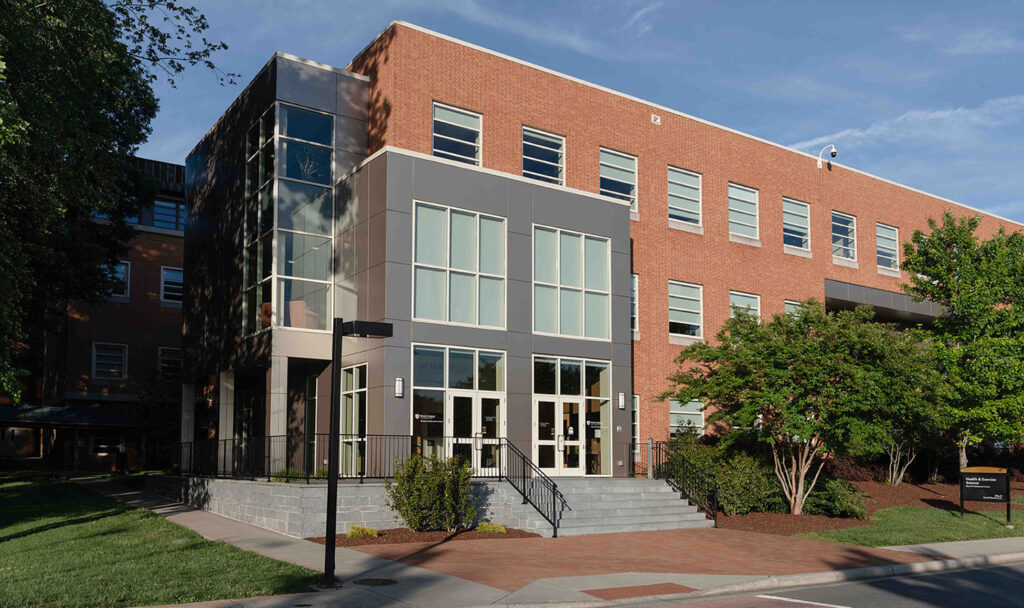
The Health and Exercise Science Department is located on the west side of the Worrell Professional Center located off of Carroll Weathers Drive.
Classrooms and research laboratories are located on the ground floor. An additional classroom, student laboratories and faculty and staff offices are located on the first floor.
Additional faculty and staff offices are located on the second floor. Access to research laboratories on the ground floor and the first and second floor is through the main lobby entrance. Access to all classrooms is through the doors at the covered bridge just past the main lobby entrance. Four large classrooms, including a tiered theatre style classroom, are available to the department.
Classrooms
Student teaching laboratories
Research laboratories
- Remote Monitoring
- Biomechanics
- Blood Draw
- Body Composition
- Cardiovascular Function
- Dynamic Function Testing
- Functional Testing
- Strength Testing
- Muscle Mechanics and Biomarker Lab
- Neuromuscular Function Lab
Research Centers
Undergraduate Program (B.S.)
The Department of Health and Exercise Science offers a program leading to a Bachelor of Science degree in Health and Exercise Science.
Graduate Program (M.S.)
The Department of Health and Exercise Science offers a 2-year program leading to a Master of Science degree.
Classrooms
HES Classrooms

HES classrooms are equipped with the latest multimedia automated touch panel systems.
Student Teaching Labs
Health Assessments – Assessment Laboratory
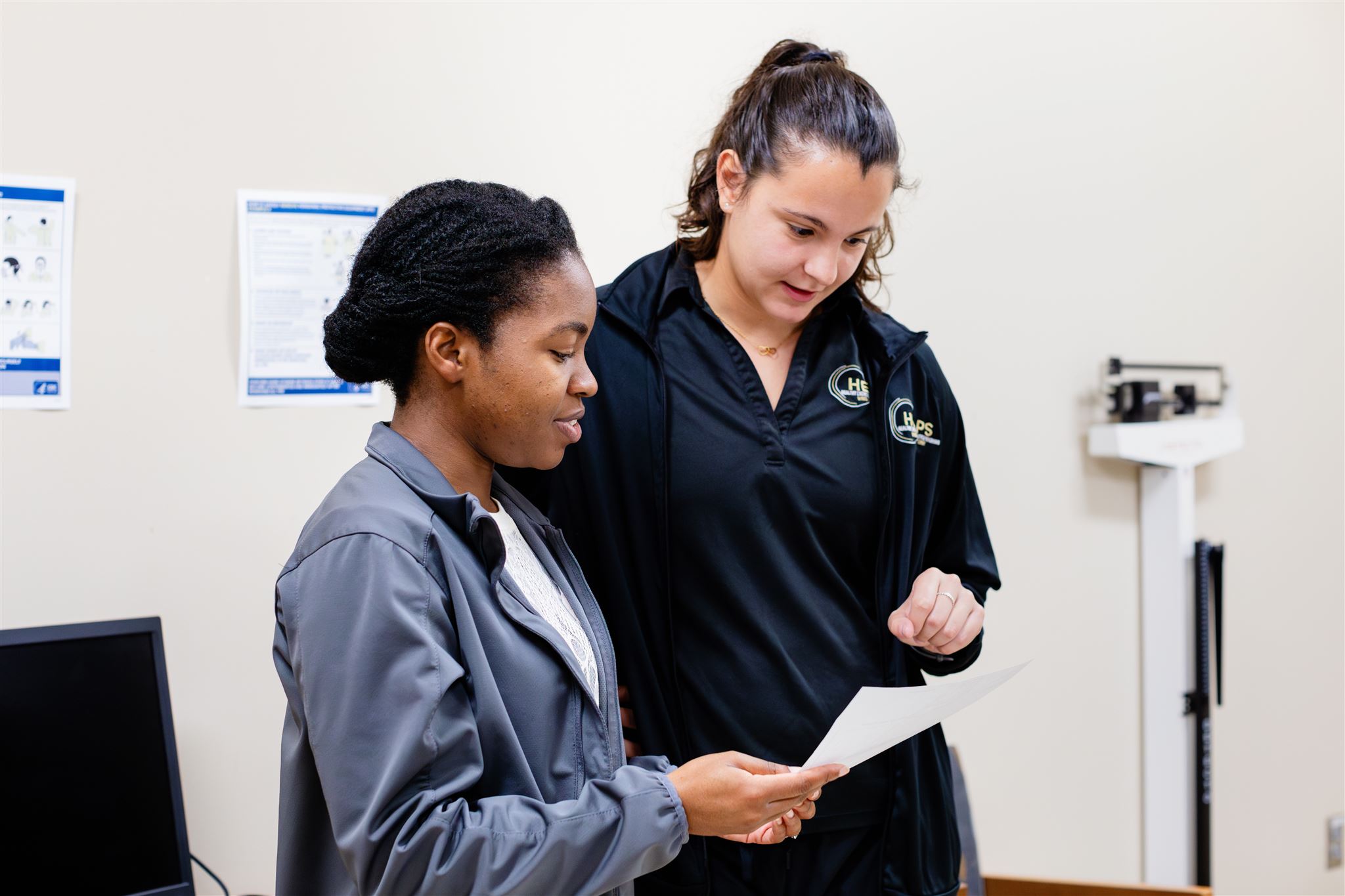
The Assessment laboratory consists of a 1,028-square-foot room equipped with a Parvo Medics’ TrueOne 2400 metabolic measurement system for cardiopulmonary stresstesting, indirect calorimetry, and maximal O2 consumption measurement. This system is equipped with a 12 lead electrocardiograph for resting and exercise ECGs. Exercise tests can be performed on either of two Trackmaster TMX425C Treadmills or one Monark Leg 818E ergometer or a Monark 881E Arm Ergometer.
A Medical Graphics 1085 Series™ body plethysmograph for determining lung function, lung volumes, respiratory mechanics, airway resistance and compliance and diffusion capacity is located in this laboratory. One portable spirometer, a VacuMed “SpiroDoc” and NDD Medical Technologies “EasyOne”, is also available for use by students.
Students may also estimate body composition using skinfold calipers, weight scales, stadiometer, and measuring tapes. Five Lenovo desktop computers may be used along with Biopac software and hardware to evaluate single lead ECGs and to perform pulmonary function testing.
Human Anatomy
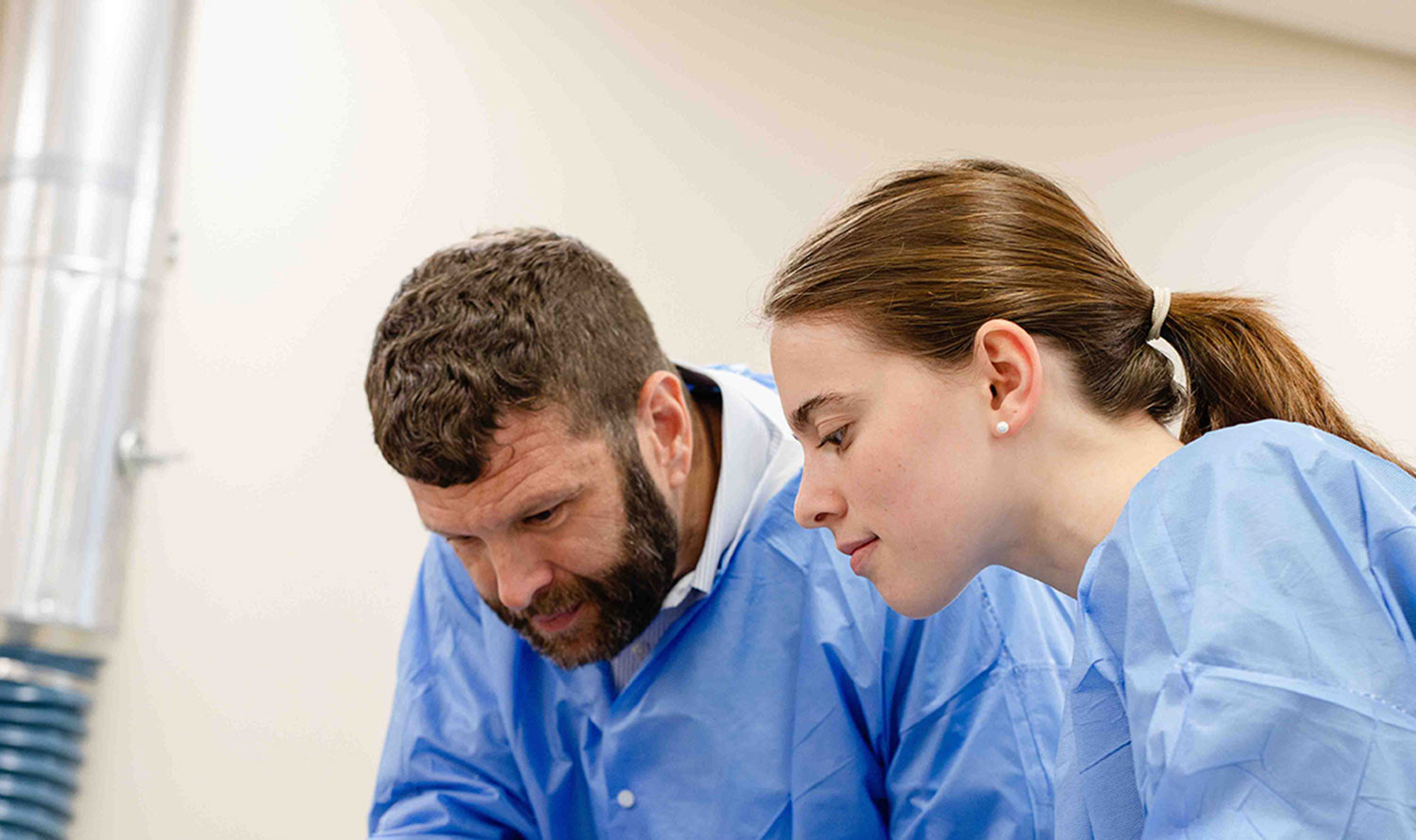
The Department of Health and Exercise Science’s 1,764-square-foot Anatomy lab is located on the first floor of Worrell Professional Center. Preceding the entrance to the lab is a spacious entranceway with cubbies and hooks to store belongings outside of the lab dissection area. As you enter the lab, the windows offer natural lighting and a welcoming view of Wait Chapel along with plenty of counter area for examining models. Many seating locations are located proximal to the entrance to study specimens and more.
Along the walls are whiteboards to illustrate important anatomical locations such as the brachial plexus. The lab includes three dissection tables with downdraft ventilation, as well as storage space for specimens and a safety shower.
The abundance of space paired with the natural lighting from the windows creates an agreeable space for students, staff, and visitors alike.
Research Labs
Remote Monitoring
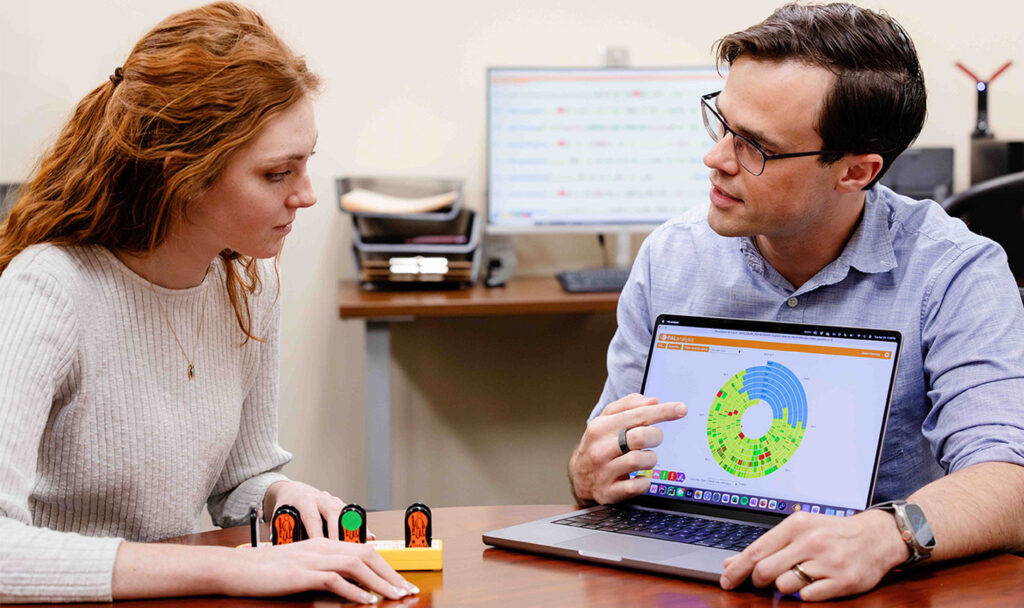
The Remote Monitoring laboratory consists of a 233-square-foot space that houses a testing chamber equipped with a TV monitor for isolating participants from technicians during testing. The room is equipped with a BIOPAC system with modules to assess vagal tone and other biomarkers of stress including skin conductance and the eye blink response.
In addition, the laboratory has an fNIR device for assessing change in prefrontal brain activation and 25 ActivPAL accelerometers with two docking stations to assess sedentary behavior and patterns of physical activity via accelerometry.
Biomechanics
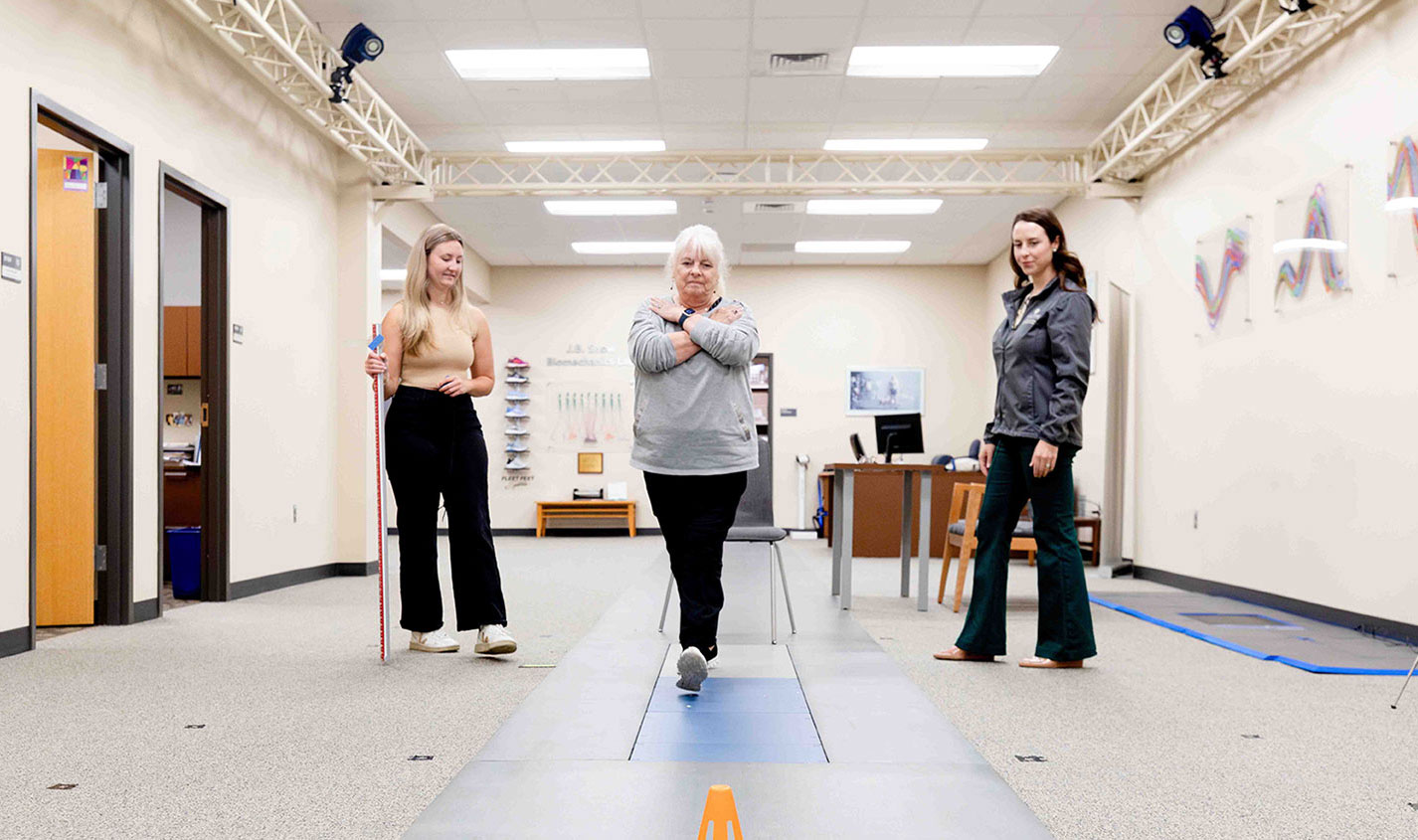
The J.B Snow Biomechanics Laboratory is a state-of-the-art gait analysis laboratory, occupying 1,800 square feet. Two AMTI Model OR6-7-2000 force platforms are mounted in a 23m long walkway equipped with a TracTronix model TF100 duel beam timing system. The force platforms are interfaced with an AMTI Model Gen 5 six channel amplifier and software to analyze the forces and moments exerted during walking. Equipment used for kinematic analysis includes 6-Motion Analysis Corporation Eagle High Speed (500 Hz) Digital cameras and Cortex software.
C-Motion Visual 3D software is used for kinematic and kinetic analysis. The motion capture and force platform systems are interfaced such that three dimensional motion of the lower extremity and joint and muscle moments of the hip, knee, and ankle are calculated.
The 3D motion capture system can be integrated with a moveable staircase consisting of 4 steps where hip, knee, and ankle kinetics and kinematics can be derived for both stair ascent and descent. A Delsys Tringo wireless EMG system can be used to collect up to 8 channels of EMG data. Gait velocity can be measured with a 4.88 m long instrumented carpet.
The carpet is composed of 18,432 force sensing sensors arranged in a 48 wide x 384 long grid. Data are sampled at either, 60, 120, or 240 Hz. The GAITRite is interfaced with a laptop computer that runs software to calculate variables related to gait performance. The GAITRite system is a valid instrument for determining gait velocity and other spatiotemporal parameters. 2D kinematic analyses for undergraduate laboratories are carried out using a Pentium computer, Sony digital video cameras, a Firewire card and MaxTRAQ 2D M2 digitizing and kinematic analysis software.
The lab has 4 Pentium computers connected to the campus network.
Blood Draw
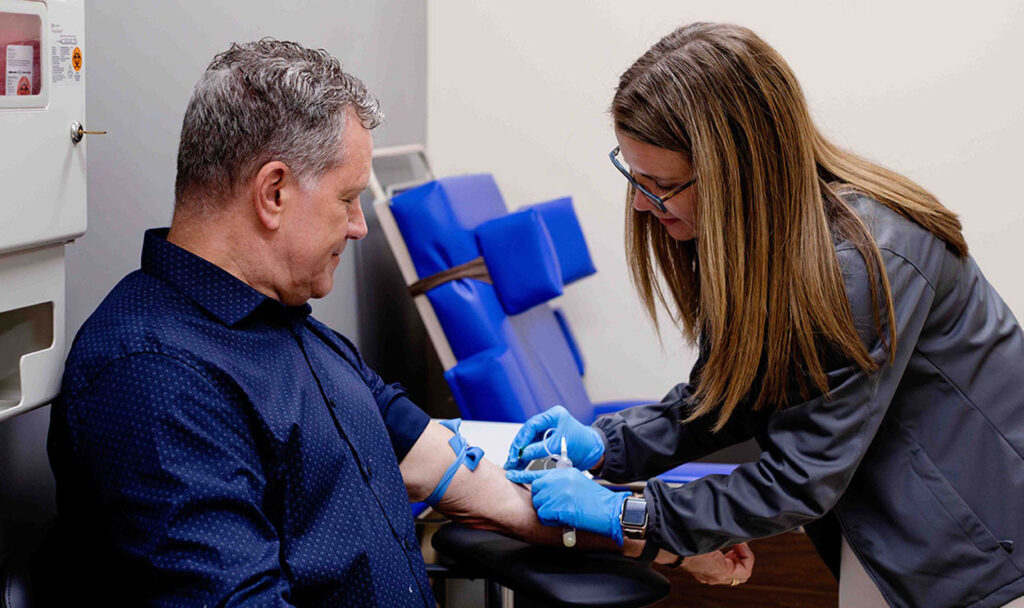
The Blood Draw laboratory consists of a 90-square-foot room that contains the necessary supplies to collect blood samples, including a reclining and straight-back chairs, and vials for obtaining different aliquots of blood for separation into plasma, serum, or whole blood. Appropriate containers are located in the space for discarding biohazard materials. Once collected, the blood can be processed in the tissue processing lab.
Body Composition
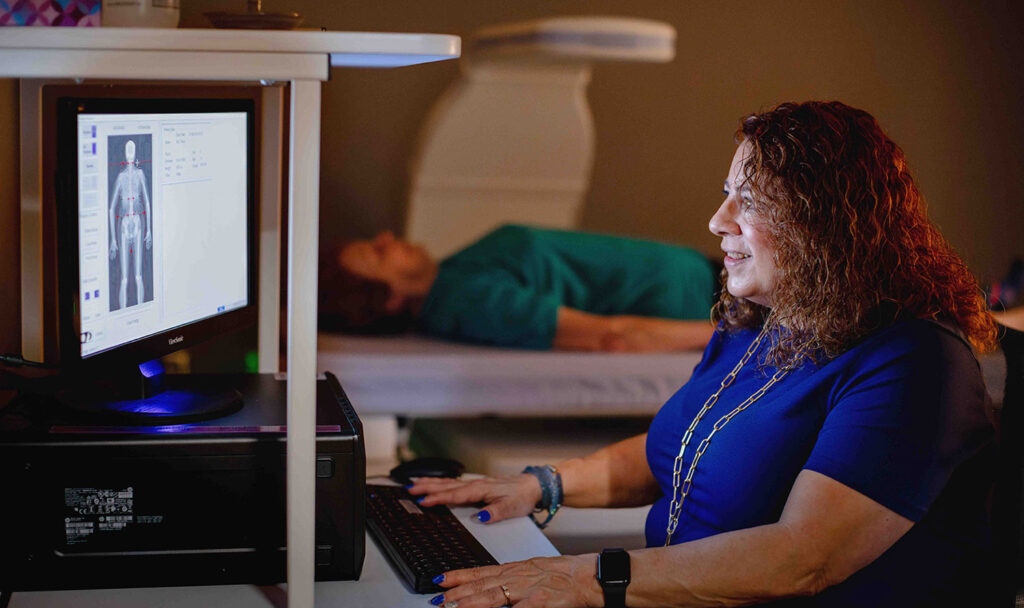
The Body Composition laboratory consists of a 212-square-foot space dedicated to a state-of-the-art GE Lunar iDXA system, providing research-grade body composition analysis. The scanning table is 113” x 52” x 25” and connected to a high-definition, direct digital detector. Features of the workstation include a technician desk and seat, Windows 7 personal computer with external hard drive, 20″ LCD monitor, and Lunar premium printer. enCORE (version 16) and CoreScan software are loaded onto the computer allowing for total body and regional tissue quantification.
In addition, the laboratory holds a locked filing cabinet, semi-private participant changing area with seat, and Health o meter® professional scale (model 349KLX).
Cardiovascular Function
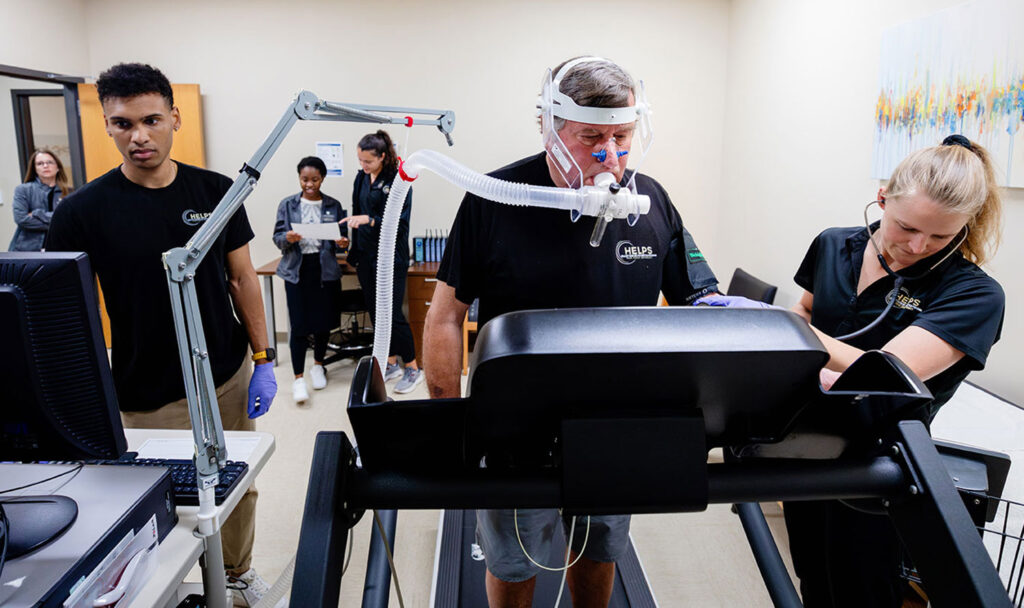
The Henry S. Miller Cardiovascular Function laboratory consists of a 275-square-foot room equipped with a Parvo Medics’ TrueOne 2400 metabolic measurement system for cardiopulmonary stress testing, indirect calorimetry, and maximal O2 consumption measurement. This system is equipped with a 12 lead electrocardiograph for resting and exercise ECGs. Exercise tests can be performed on a Trackmaster TMX428CP Treadmill or a Lode Corival Bike Ergometer. For individuals wishing to be tested on their own personal bike, a Racermate electronically braked CompuTrainer is available.
Dynamic Function Testing
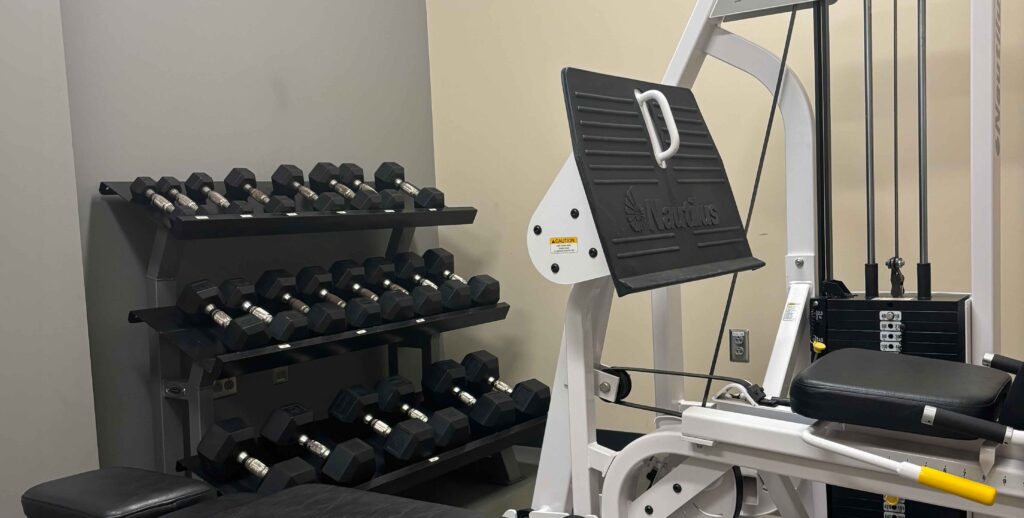
The Dynamic Testing laboratory consists of a 184-square-foot room equipped with Nautilus machines, an adjustable bench, and hand-held weights that range from 5 to 100 pounds. The ability to measure strength through a full range of motion is possible for muscles of both the upper and lower extremities.
Functional Testing
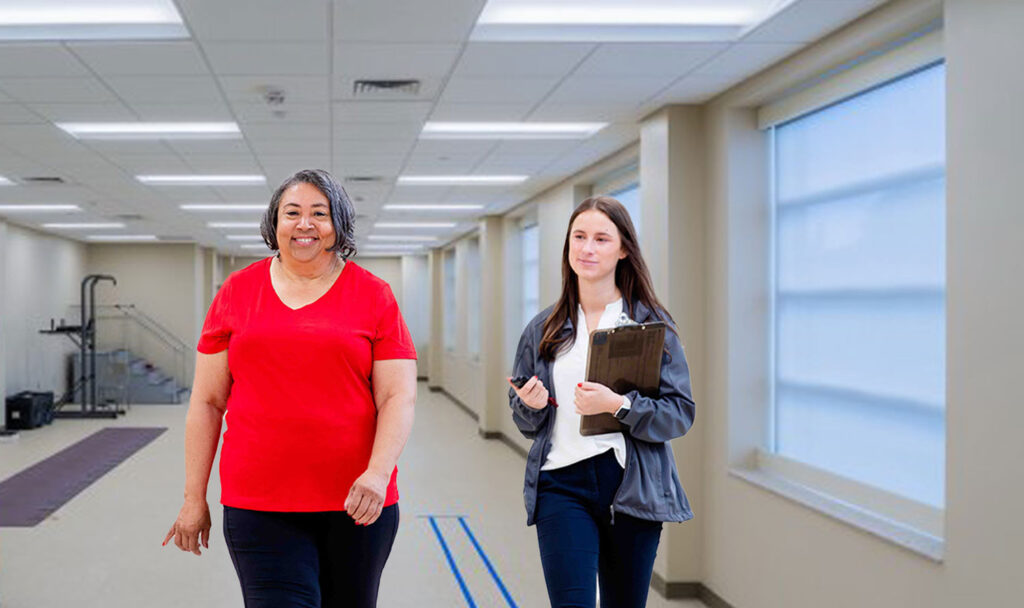
The Functional Testing laboratory consists of a 1,436-square-foot room and includes a 20 meter walkway for completing timed and distance specific walking tests. Additionally, various apparatus for assessing physical function and physical performance are located in this room. The ability to measure such tasks a stair climbing, lifting and carrying, ambulation and entering and exiting a car can be determined using the apparatus in this room. The myosin metabolator and ab carver, two specialized and task specific pieces of equipment for assessing the performance attributes of highly functional older adults, can also be found in this laboratory.
Strength Testing
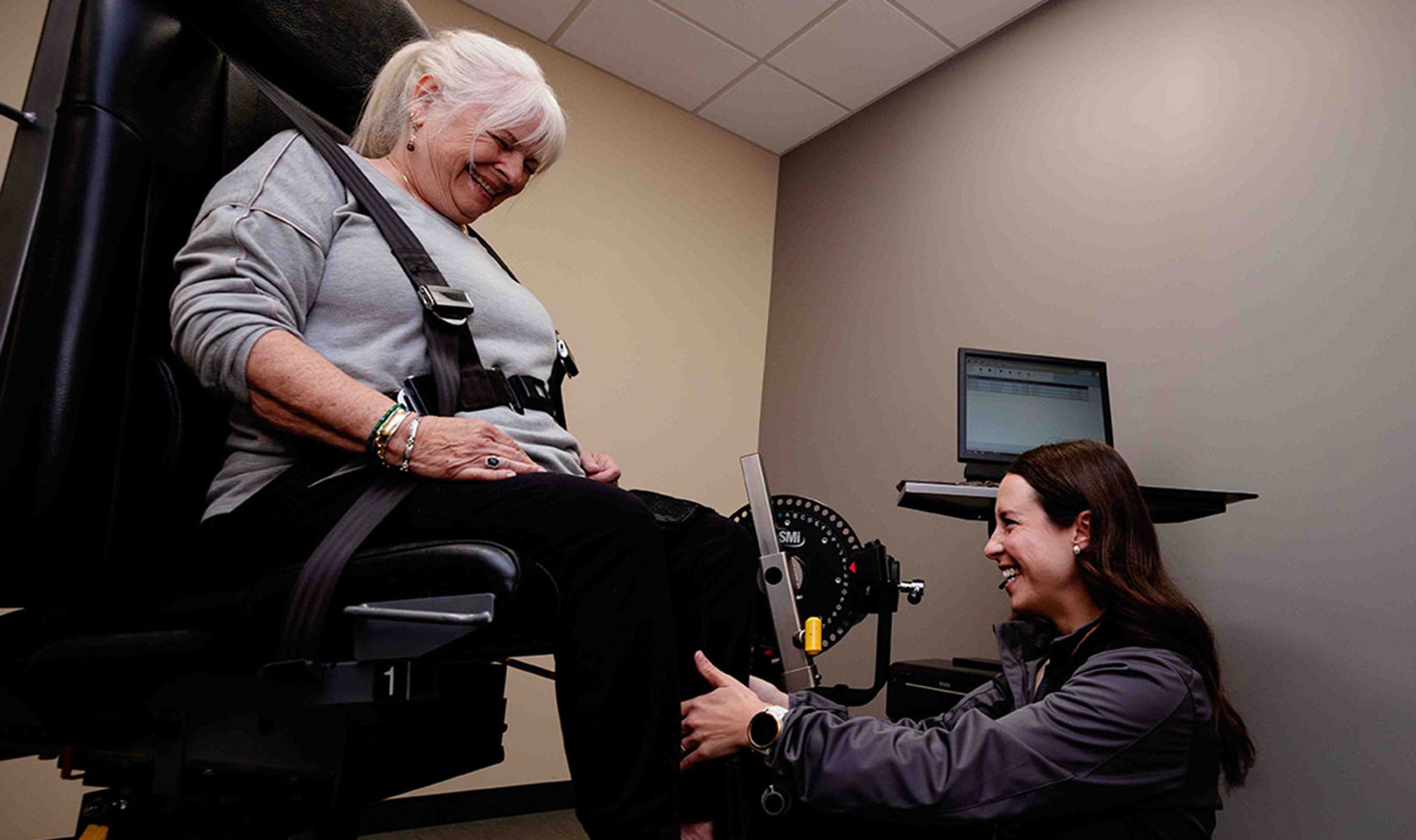
The Strength Testing Laboratory houses a HUMAC NORM isokinetic dynamometer for comprehensive isometric and isokinetic muscular strength evaluation and a handheld Lafayette Instruments dynamometer with a load cell system to measure static force.
Muscle Mechanics and Biomarker Lab
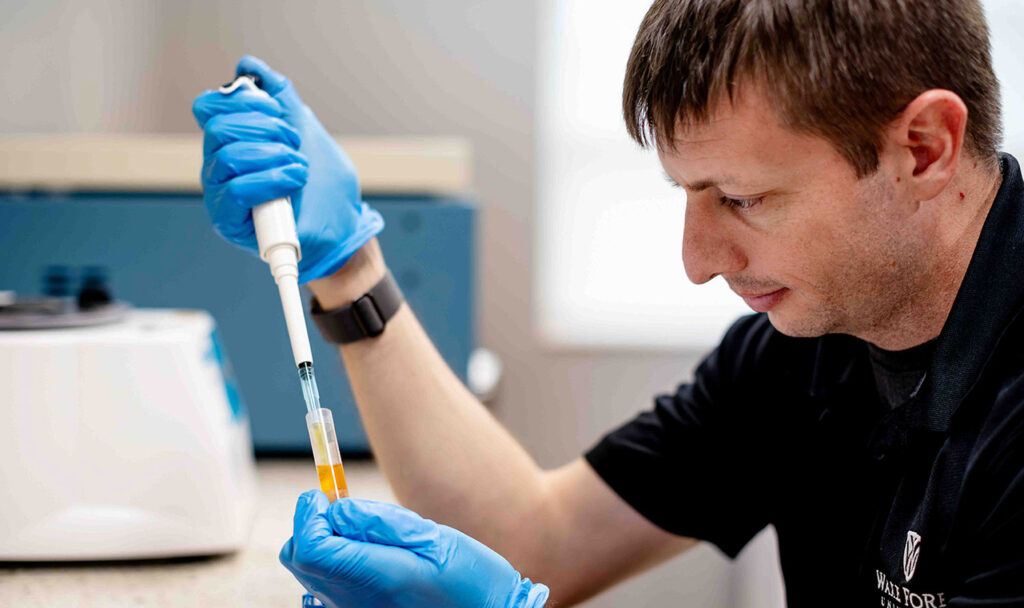
The Muscle Mechanics and Biomarker Lab is in a 187-square-foot room equipped with a Beckman refrigerated centrifuge for separating whole blood into plasma or serum. There is over 20 feet of counter space for processing biological samples and conducting assays with samples.
A National Health Laboratories Physicians Centrifuge is also contained in the room.
A biohazard refrigerator is available for keeping samples and assay kits required for samples.
A sink and appropriate biological materials discard receptacles are also contained in the room.
Neuromuscular Function Lab

The Neuromuscular Function Lab is equipped with state-of-the-art electrophysiology units to capture various biopotential signals including surface EMG (sEMG), with high resolution and precision.The lab includes the Biopac MP150 system, equipped with 8 wireless sEMG channels (BN-EMG-2-T), along with wireless ECG and respiration sensors (BN-RSPEC-T). Additionally, the lab incorporates the iWorx IX-TA-ROAM system, which enables advanced measurement of distinct biopotentials, such as sEMG, as well as other high-resolution measures like electrogoniometry and hand dynamometry. These systems allow for a comprehensive analysis of neuromuscular responses during exercise, as well as how these responses relate to physiological adaptations in other organ systems.
The lab also is equipped with a brand new Keiser A300 pneumatic leg press machine, specifically designed for precise assessment of lower body strength and power. This advanced machine utilizes an air compressor to generate a highly controlled and easily adjustable level of resistance, eliminating the need for traditional solid weights. The A300 provides a low inertia form of resistance, allowing for smooth and consistent resistance, regardless of the velocity of movement. Additionally, it features real-time data on resistance, sets, repetitions, and peak power, making it a versatile tool for assessing muscle function in both clinical and athletic populations.
Our lab also features two wireless microFET2 Digital Handheld Dynamometers. This unique, handheld dynamometer is battery operated, weighs less than a pound, and is ergonomically designed to fit comfortably in the palm of your hand. It is designed to quantify isometric muscle force, offering immediate feedback on strength levels for targeted assessment. With its digital display and straightforward operation, the microFET2 allows users to take accurate, repeatable measurements, ideal for tracking muscle strength in clinical or research environments.
Clinical Research Center
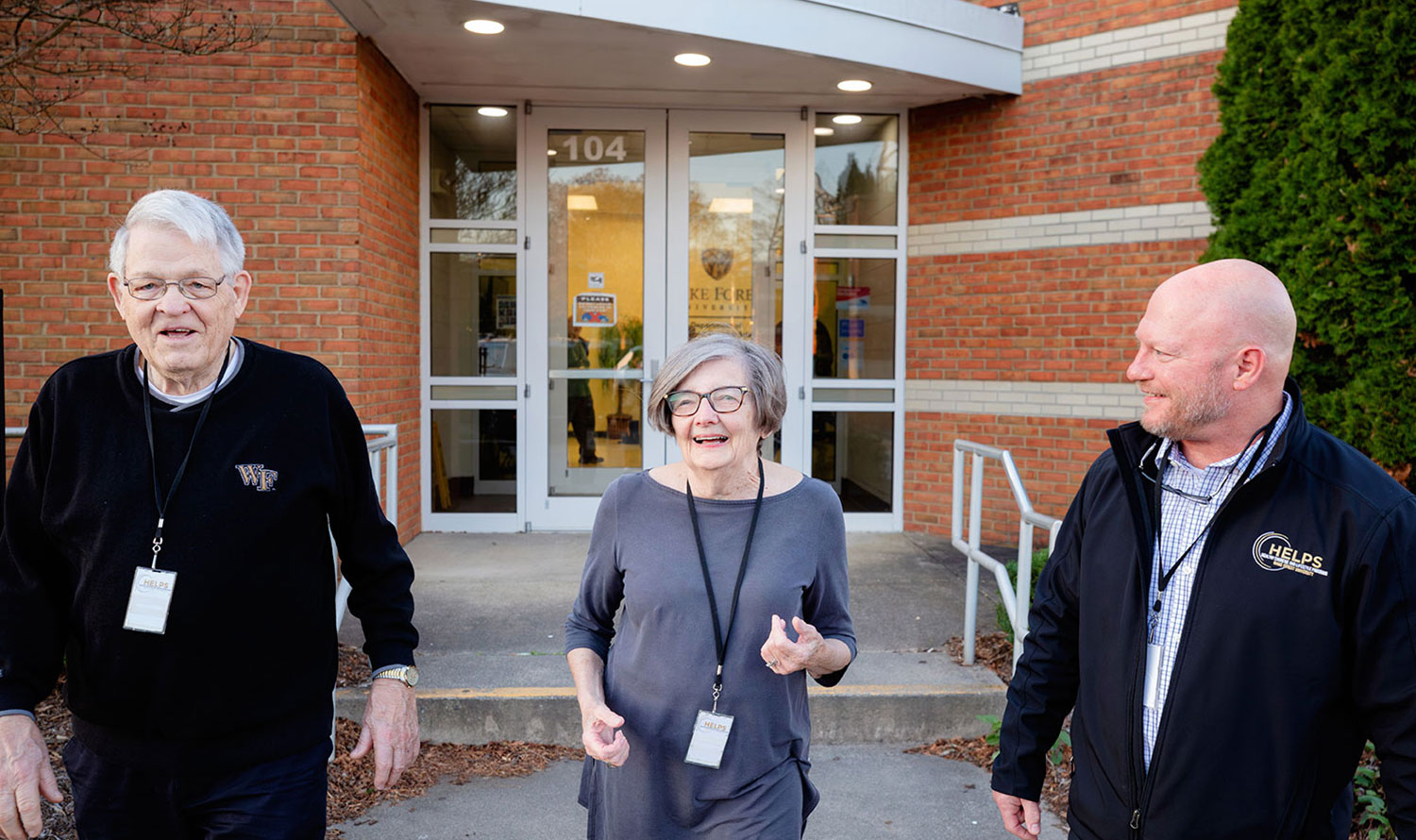
The Clinical Research Center, a 20,000-square-foot facility that opened in 2003, is the University’s primary intervention site for human subjects exercise training studies. It is a stand-alone facility located approximately one mile from the University’s Reynolda campus and is adjacent to the Wake Forest University football complex and Tennis Center.
The facility is dedicated to clinical trials research conducted by the faculty of the Department of Health and Exercise Science and the Healthy Exercise and Lifestyle Programs (HELPS) intervention, a community-based, outpatient, medically-directed chronic disease treatment and prevention program. The exercise area totals 13,699 square feet and comprises an indoor track (1/13th mile), space for group-based stretching and chair strengthening exercise, Schwinn AirDyne stationary bike ergometers, NuStep T4r recumbent cross training machines, Precor total body elliptical trainers and upright and recumbent stationary cycles, Nautilus 2ST and Nitro weight training machines, 0-90 degree adjustable benches, and 1.0-50.0 pound dumbbells. The exercise area can be partitioned into two equal sub-areas by use of a ceiling-mounted divider curtain, allowing different intervention studies to be delivered simultaneously when experimental contamination issues are a concern.
Group-based behavioral and educational interventions can be delivered at the Clinical Research Center in a separate multimedia integrated conference room, measuring 402 square feet. The CRC also houses locker rooms for men andwomen, including toilets, lavatories, showers, bench seats, dressing areas, and storage lockers. The facility is fully climate-controlled, and offers easy access by virtue of its off-campus location, ground level access, and parking that is immediately adjacent to the building.
